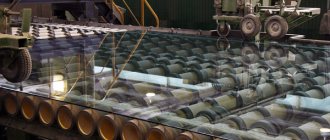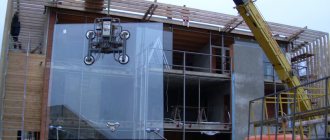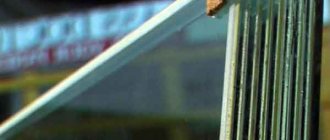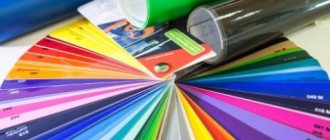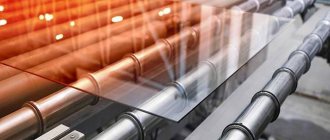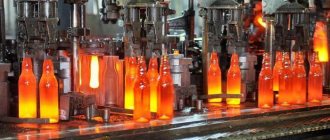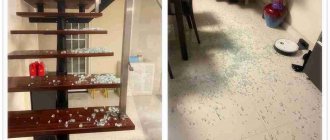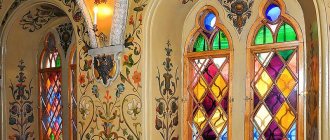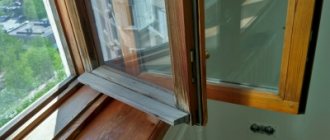Every day we see hundreds of windows with glass installed. Moreover, glass differs in composition, place of application and manufacturing process. Therefore, we decided to dwell a little more on this interesting topic, namely, we will look at the types of glass. The type and quality of glass for windows is determined at the place of its production in the molten state. Special processing at the initial stage gives the glass specific properties, such as strength, color, size, etc.
Float glass
Float glass is made by floating molten glass in a bath of liquid tin, resulting in a sheet of glass with a smooth surface (thermopolished flat glass).
This type of glass is produced transparent with a thickness from 3 to 25 mm. For windows, glass with a thickness of 3 to 6 mm is usually used.
Which glass is better - what to choose from
The history of glass goes back more than 5,000 years. The first glass window appeared in Pompeii, Italy. Despite such an impressive history, an explosive leap in window glass technology occurred in the mid-20th century. Production using the float glass method made it possible to achieve a perfectly flat surface without optical distortion. The method consists of the thermal formation of glass melt on the surface of molten tin, followed by its further molding and cooling.
Innovation in the glass industry has come a long way. Glass for various purposes has appeared in the product lines of the world's leading manufacturers. Additional functions are added to glass by applying various coatings to its surface.
Photo: modern glass production totals millions of m2 Coatings according to the method of application are divided into: pyrolytic and magnetron, and according to functionality: sun protection, energy saving and multifunctional.
Pyrolytic coatings are produced by depositing metal oxides from solutions or vapors onto still hot glass directly on a float line. The resulting coatings are called “hard”, resistant to external influences on a par with glass, and glass can be used as part of a double-glazed window or separately.
Magnetron coatings are produced by depositing charged metal ions onto the glass surface in a vacuum magnetron installation. This coating is classified as “soft” because its resistance to external influences is lower than the resistance of the glass itself. Glass with soft coatings in most cases cannot be used in single glazing, only as part of a double-glazed window sprayed inward. Soft coatings are more effective than hard ones, which determines their widespread use to impart sun-protection and heat-saving properties to glass. This category includes energy-saving i-glass, solar control glass and new generation multifunctional glass.
Photo: glass also solves the problem of ensuring energy efficiency in housing Multifunctional glass combines the properties of energy-saving and solar control glass due to the thinnest layers of sputtering of several metals.
Patterned glass or frosted glass
Patterned glass has a decorative treatment or texture on one side. The transparency of such glass depends on the intensity of the pattern and the chosen color. Typically, patterned glass is made with a thickness of 3 to 6 mm.
Patterned glass or frosted glass is used in bathrooms and also in the kitchen. It transmits a sufficient amount of light and also does not provide a clear image.
Types of glass
Quartz glass
Quartz glass is produced by melting high-purity silica raw materials. Quartz glass consists of silicon dioxide SiO2 and is the most heat-resistant
glass: its linear expansion coefficient in the range of 0 - 1000 °C is only 6x10-7. Therefore, hot quartz glass, lowered into cold water, does not crack.
The softening temperature of quartz glass at which a dynamic viscosity of 107 Poise (10 Pachs) is achieved is 1250 °C
. In the absence of significant pressure drops, quartz products can be used up to this temperature. Complete melting of quartz glass, when products can be made from it, occurs at 1500-1600 °C.
Two varieties are known
quartz glass:
transparent
quartz and
milky matte
. The turbidity of the latter is caused by the abundance of tiny air bubbles, which cannot be removed when melting glass due to the high viscosity of the melt. Products made from cloudy quartz glass have almost the same properties as products from clear quartz, with the exception of optical properties and greater gas permeability.
The surface of quartz glass has little adsorption
ability to various gases and moisture, but has the highest gas permeability among all glasses at elevated temperatures. For example, through a quartz tube with walls 1 mm thick and a surface of 100 cm2 at 750 °C, 0.1 cm3 of H2 penetrates in one hour if the pressure difference is 1 atm (0.1 MPa).
Quartz glass should be carefully protected from any contamination, even such as greasy hand marks. Before heating the quartz glass, any opaque stains on it are removed with dilute hydrofluoric acid, and fatty stains with ethanol or acetone.
Quartz glass is resistant to all acids
, except HF and H3PO4. It is not affected by C12 and HCl up to 1200 °C, dry F2 up to 250 °C. Neutral aqueous solutions of NaF and SiF4 destroy quartz glass when heated. It is completely unsuitable for working with aqueous solutions and melts of alkali metal hydroxides.
Quartz glass retains its electrical insulating properties at high temperatures. Its electrical resistivity at 1000 °C is 106 Ohmcm.
Regular glass
Common glasses include soda-lime, lime-potassium, and soda-lime-potassium.
Lime-sodium ( soda)
), or sodium-calcium-magnesium-silicate glass, is used to produce window glass, glass containers, and tableware.
Lime-potassium ( potash
), or potassium-calcium-magnesium-silicate glass, has higher heat resistance, increased gloss and transparency; used to produce high quality tableware.
Lime-sodium-potassium ( soda-potash
), or sodium-potassium-calcium-magnesium-silicate glass, has increased chemical resistance due to the mixture of sodium and potassium oxides; most common in tableware production.
Borosilicate glass
Glasses with a high content of SiO2, low content of alkali metal and significant content of boron oxide B2O3 are called borosilicate. Boric anhydride acts as a flux for silica, so that the alkali metal content of the charge can be sharply reduced without raising the melting temperature excessively. In 1915, Corning Glass Works
began producing the first borosilicate glasses under the trade name
Pyrex
.
Pyrex
brand glass is borosilicate glass containing at least 80% SiO2, 12-13% B2O3, 3-4% Na2O and 1-2% Al2O3.
It is known under different names: Corning
(USA),
Duran
50,
Jena
glass G20 (Germany),
Gizil
,
Monex
(England),
TS
(Russia),
Sovirel
(France),
Simax
(Czech Republic).
Depending on the specific composition, the thermal shock resistance of such glasses is 2–5 times higher than that of lime or lead glass; they are usually much superior to other glasses in chemical resistance and have properties useful for electrical applications.
The softening temperature of Pyrex glass to a dynamic viscosity of 1011 poise (1010 Pas) is 580-590 °C. Nevertheless, glass is suitable for work at temperatures up to 800 ° C, but without excess pressure. When using a vacuum, the temperature of Pyrex glass products should not be raised above 650 °C. Unlike quartz glass, Pyrex glass is practically impenetrable to H2, He, O2 and N2 up to 600 °C. Hydrofluoric and heated phosphoric acids, as well as aqueous solutions (even 5%) of KOH and NaOH, and even more so their melts, destroy Pyrex glass.
Crystal glass
Crystal glass (crystal) is high-grade glass that has a special shine and the ability to strongly refract light. There are lead-containing and lead-free crystal glasses.
Lead-containing crystal glasses
— lead-potassium glass, produced with the addition of oxides of lead, boron and zinc. Characterized by increased weight, beautiful play of light, melodious sound when struck; used for the production of high-quality tableware and decorative items. The greatest use is for crystal containing from 18 to 24% lead oxides and 14-16.5% potassium oxide (light).
Lead-free crystal glasses include barite, lanthanum, etc.
Barite
glass contains an increased amount of barium oxide.
It has better gloss, higher light refraction and specific gravity compared to ordinary glasses; it is used as optical
and
special
glass.
Lantana
glass contains lanthanum oxide La2O3 and lanthanides (compounds of lanthanum with aluminum, copper, etc.).
La2O3 increases light refraction. It is of high quality; used as optical
.
Strained glass
Tempered glass is ordinary glass that has been heat treated to increase its strength. When such glass breaks, it breaks into very small pieces and cannot be repaired.
cut or drill tempered glass , except before tempering. This type of glass is used in phones and other things.
Properties of glass
Different types of glass for windows have different properties.
However, their basis has common characteristics. After all, it is necessary to separate the properties of the glass itself and the auxiliary elements that are used in the manufacture of different products. The only exceptions may be tempered or body-dyed glass for window frames and active sashes. These products have different thermal conductivity, fragility and bending strength. Since the composition of window glass is approximately the same between different manufacturers (75-80% SiO2, 10-15% CaO and approximately 15% Na2O), it has generally similar properties:
- thermal conductivity ranges from 0.4 to 0.82 W/(m °C) - this means that the material conducts heat well and has low energy efficiency;
- light transmittance – up to 92%;
- chemical resistance – window glass is inert to household chemicals and substances contained in the air;
- light refraction – from 1.46 to 1.53;
- the impact bending strength is 0.2 MPa, which indicates the fragility of the material;
- electrical conductivity depends on temperature and the presence of impurities, but in general the material is safe to use.
Such properties today cannot be considered ideal for modern windows, so manufacturers use technologies and substances to improve the characteristics. After all, safety, level of energy saving, sun protection and aesthetics largely depend on what window glass is made of. To improve the properties, different methods are used - adding the necessary chemical compounds and substances to the mixture during the glass manufacturing process or applying various coatings to the surface of the finished sheets. The technology of integrating other materials inside the glass (reinforcement) is also sometimes used.
Laminated glass
Laminated glass is two or more ordinary glasses glued together with a transparent, durable plastic film. One of these types of glass is “triplex” . The transparent, durable film serves to absorb shock and also reduces the risk of injury from flying pieces of glass.
This type of glass prevents textiles and carpets from fading because it blocks 99% of ultraviolet radiation. Thickness varies from 4 mm to 13.5 mm. You can find transparent, colored and patterned varieties.
General information about glass and fused materials
Depending on the source raw material, three types of fused materials and products are distinguished:
- glass and glass products;
- slag cast products;
- fused stone products (rocks).
Glass is the most widely used material. Among slag products and materials, cast paving stones for paving roads and crushed stone for concrete have become widespread. Special acid-resistant, fire-resistant and facing materials are made from fused rocks.
In structure, fused materials can be amorphous (transparent or opaque), such as glass, or partially crystalline (fused products from rocks or slag, all opaque). In terms of chemical composition, these fused materials are various silicates, aluminosilicates, in particular magnesium silicates, less commonly borates, phosphates, etc.
GLASS PRODUCTS DECORATED IN HOT CONDITION
22. Free blown glass productNDP. Bent glass product
D. Freigeblasenes Glaserzeugnis
A glass product formed and decorated in a viscoplastic state using tools designed for these operations 23. Glass product with ornamentsD. Glaserzeugnis mit Ornamenten
A glass product decorated with glass moldings, chips, ribbons, rods, threads, followed by heating or collecting glass and its further molding 24. Glass product with optical effectD. Glaserzeugnis mit optischen Effekten
A glass product decorated in rough forms, followed by blowing to obtain an optical effect in the product 25. Pointed glass productD. Glaserzeugnis mit Anlauffarbe
A product made of colorless glass with additives, which, upon subsequent cooling and reheating, acquires color 26. Crackle glass productD. Glaserzeugnis Krakelee
A glass product decorated by rapid cooling of the set in water or wet sawdust to form thin surface cracks that melt when it is further heated and processed 27. Glass product with reliefsD. Glaserzeugnis mit Reliefen
Glass product decorated in relief forms by pressing or blowing 28. Glass product with gas inclusionsD. Glaserzeugnis mit
Glass product decorated with airy ribbons, threads and bubbles 29 Glass product with foreign inclusionsD. Glaserzeugnis mit
A glass product decorated by melting various objects made from other materials into glass meltStandardized glass quality indicators
Standardized glass quality indicators are calculated in accordance with the requirements of the optical system. The nominal values are:
- Refractive index, dispersion coefficient. Five categories are established.
- Uniformity across ne batch of workpieces. Four quality classes are established for this value.
- Optical homogeneity. Characterized by the maximum discrepancy between indicators for different zones of the glass product. Six categories of homogeneity are established.
- Integral attenuation index, transmittance. Eight categories are established.
- Birefringence. Five categories are established. The difference in the movement of the rays is taken into account at a wavelength of 550 nm, measured along a certain edge.
- Lack of hair. There are two categories of glass according to this indicator.
- Bubbling. Classified into five groups with a permissible total cross-sectional area of bubbles for each.
Image No. 4: glass quality indicators
Decorative glass.
Very often you can see that an unfinished house, after installing windows, is uniquely transformed and completely changes its character. This is the undoubted merit of correctly selected glasses. Glass, as a decorative item, can amazingly change the character of a home or its interior decoration. For this purpose, manufacturers produce decorated glass sheets of various technical parameters of thickness and light transmission by applying patterns to the front surface.
High strength glass.
The consumers of such glass are most often customers who plan to glaze premises exposed to certain risks of destruction. This type of glass has a second name – tempered (tempered). In the event of a mechanical shock, this glass tends to break into tiny fragments that are safe in the sense of damaging the skin or body of a person of size. Often, when constructing attics, such glass is very appropriate.
Manufacturers, in order to attract customers to improve their product range, offer various types of films as an additional means of improving glass. Films, due to their low cost relative to the cost of glass, can change already installed windows or help solve decorative problems in the process of glazing houses.
ALPHABETIC INDEX OF TERMS IN RUSSIAN LANGUAGE
| Overlay glass product | 17 |
| Finished glass product | 11 |
| Engraved glass product | 33 |
| Bent glass product | 22 |
| Decorative glass product | 9 |
| Glass product, decorative* etched | 35 |
| _________________ * The text corresponds to the original. — Database manufacturer's note. | |
| Combined glass product | 19 |
| Crackle glass product | 26 |
| Mechanized blown glass product | 13 |
| Multi-stage glass product | 18 |
| Bent glass product | 16 |
| Pressed glass product | 14 |
| Press-blowing glass product | 15 |
| Hand blown glass product | 12 |
| Glass product with diamond cut | 31 |
| Free blown glass product | 22 |
| Glass product with gas inclusions | 28 |
| Glass product with foreign inclusions | 29 |
| Glass product with matte finish | 32 |
| Pointed glass product | 25 |
| Glass product with optical effect | 24 |
| Glass product with ornaments | 23 |
| Sandblasted glass product | 34 |
| Glass product with a flat edge | 30 |
| Glass product with surface decoration | 36 |
| Glass product with reliefs | 27 |
| Strengthened glass product | 21 |
| Centrifugal glass product | 20 |
| Semi-finished glass product | 10 |
| Glassware | 8 |
| Sodium-lime-silicate glass | 1 |
| Household special glass | 2 |
| Crystal glass | 3 |
| Barium crystal | 7 |
| High lead crystal | 6 |
| Low lead crystal | 4 |
| Lead crystal | 5 |
(Changed edition, Amendment No. 2).
Wired glass
To strengthen the glass, a metal mesh can be used, which is placed into the body of the silicate mass during the casting of sheets. In the production of reinforced glass, 3 types of steel wire can be used:
- chrome plated;
- nickel plated;
- annealed.
The mesh can be twisted or welded with different areas and shapes of cells and is located parallel to the surface of the sheets. It does not make the glass much stronger, but at the same time it does not allow it to crumble when broken and becomes an additional barrier to intruders entering the interior. Reinforced glass is transparent, frosted and colored and has a smooth or textured surface.
Low emissivity glass.
Such glass, in technical language called selective, during production is coated with a special composition of optical active components, which gives it the ability to transmit sunlight well from the outside and prevent flows from escaping from inside the room. This glass is used to save heat indoors.
How to check the quality of glass
You can check the quality of glass by conducting a chemical examination. It will allow you to accurately determine the type, type, composition of the material and its properties:
- melting point;
- impact resistance;
- terms of Use.
In accordance with the task, the expert checks the quality of glass products and their compliance with the following parameters: the method of production and processing of the canvas and its edges, weight, color, size, shape, capacity. The presence of defects that negatively affect thermal, optical, mechanical, aesthetic and sanitary properties is revealed.

